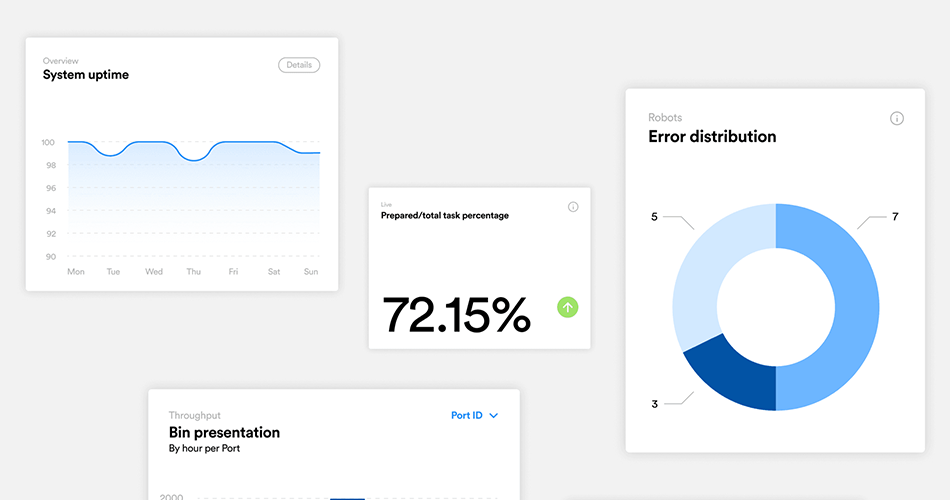Four Strategies Retailers Need to Implement in 2025 and Beyond
Learn the retail trends impacting supply chain and logistics in 2025 and four strategies to tackle them in Q2 and beyond.
In the rapidly evolving retail landscape of 2025, staying ahead requires strategic planning and operational excellence. Retailers must adopt forward-thinking approaches to meet increasing consumer expectations and complex supply chain dynamics. Here are four strategies that should be on the roadmap to maximize profits.
1. Get predictive: Let data guide the way
Consumer preferences shift so many times throughout the year. If retailers are relying solely on historical data, they are trailing behind competitors. Predictive analytics empowers retailers to anticipate future trends, optimize inventory levels, and enhance customer satisfaction.
Predictive analytics goes beyond simply looking at what has occurred and aims to anticipate what might happen next by identifying patterns and trends in historical data. Insights into the future can help reduce the risk of stockouts and overstocking, thereby minimizing inventory costs and ensuring that they have what customers are looking for throughout the year.

By leveraging data to forecast future needs and trends, companies can also avoid overstaffing during low periods and ensure sufficient coverage during peak times, ultimately minimizing unnecessary labor expenses.
By implementing predictive analytics around your logistics ecosystem, you can reduce maintenance costs and improve equipment reliability. Unify Analytics from AutoStore, allows you to automate the process, get faster and deeper actionable insight and trends, allowing to reduce wasted time, eliminate human error, optimize their system performance, and fuel business growth.
2. Be fast & efficient: Ensure speed meets precision
Customers today expect immediacy. Whether it’s same-day shipping or in-store pickup within hours, slow fulfillment kills conversion. But speed alone isn’t enough — you also have to be accurate. A fast but incorrect order is just a fast disappointment. Retailers need to rely on a reliable automated system to ensure they can keep up with not only customer expectations but also the competition. If the competition is offering a better customer experience, shoppers will gravitate toward them.

Installing a streamlined workflow throughout your whole fulfillment process is key to ensuring customer satisfaction. Automating every step, including the picking and packing of merchandise, helps reduce errors while increasing the speed and picking lines of your workflow.
AutoStore is a cost-efficient investment, providing the productivity boost retailers need to maintain a competitive edge. Its robotic technology, modular components, sophisticated software, and user-friendly controls allow retailers to stay on top of the supply chain, and keep customers satisfied.
3. Eliminate the excess: Find ways to increase profit margins
In today’s high-stakes retail environment, excess is the enemy of profitability. Every square foot, every misplaced SKU, and every extra labor hour eats into profit margins. In a market dominated by price wars and rising logistics costs, retailers must strip away operational excess. Efficiency is not just a goal — it’s a survival strategy.
Real estate isn’t getting cheaper. It’s one of the most expensive costs for retailers. Optimizing warehouse workflows improves operational efficiency, ensuring retailers can store more products in a smaller space while keeping fulfillment speeds high. Labor is expensive and a challenge to maintain with high turnover rates. According to the U.S Bureau of Labor Statistics, wages continue to rise each year.

AutoStore is proven to save space and labor costs — in its Total Economic Impact report, Forrester researchers found that the average AutoStore warehouse saves $5.9 million in real estate and $2.9 million in labor costs over a three-year period.
{{cta2}}
Break down the ‘channel’ walls: Unify the customer experience
Customers nowadays have no affinities for how and where they shop or how much they spend. They thrive on dynamic preferences and adaptability, seamlessly navigating online and offline channels and expecting a consistent experience across all platforms. They don’t see shopping channels. They see brands. Whether they’re shopping online, mobile, or in-store, they expect a consistent, connected experience. Disjointed channels create friction, confusion, and ultimately lost sales. Integrating fulfillment across all channels ensures consistency and reliability.

Having a unified inventory for every channel can make or break a customer’s shopping experience. Fragmented inventory systems can lead to frustrated customers and losing out on sales. This includes online or in-store stockouts, and inconsistent order fulfillment.
A BOPIS strategy and service offerings like same-day fulfillment increase customer engagement and satisfaction. Without this level of efficiency, you lose customers to the competition.
Retail fulfillment is more complex than ever, but AutoStore makes it simple. By combining ultra-dense storage with fast, accurate order processing, retailers can break down channel barriers and deliver seamless, high-speed service across every touchpoint.
{{cta1}}



%20(1800%20x%201000%20px)%20(1).png)











